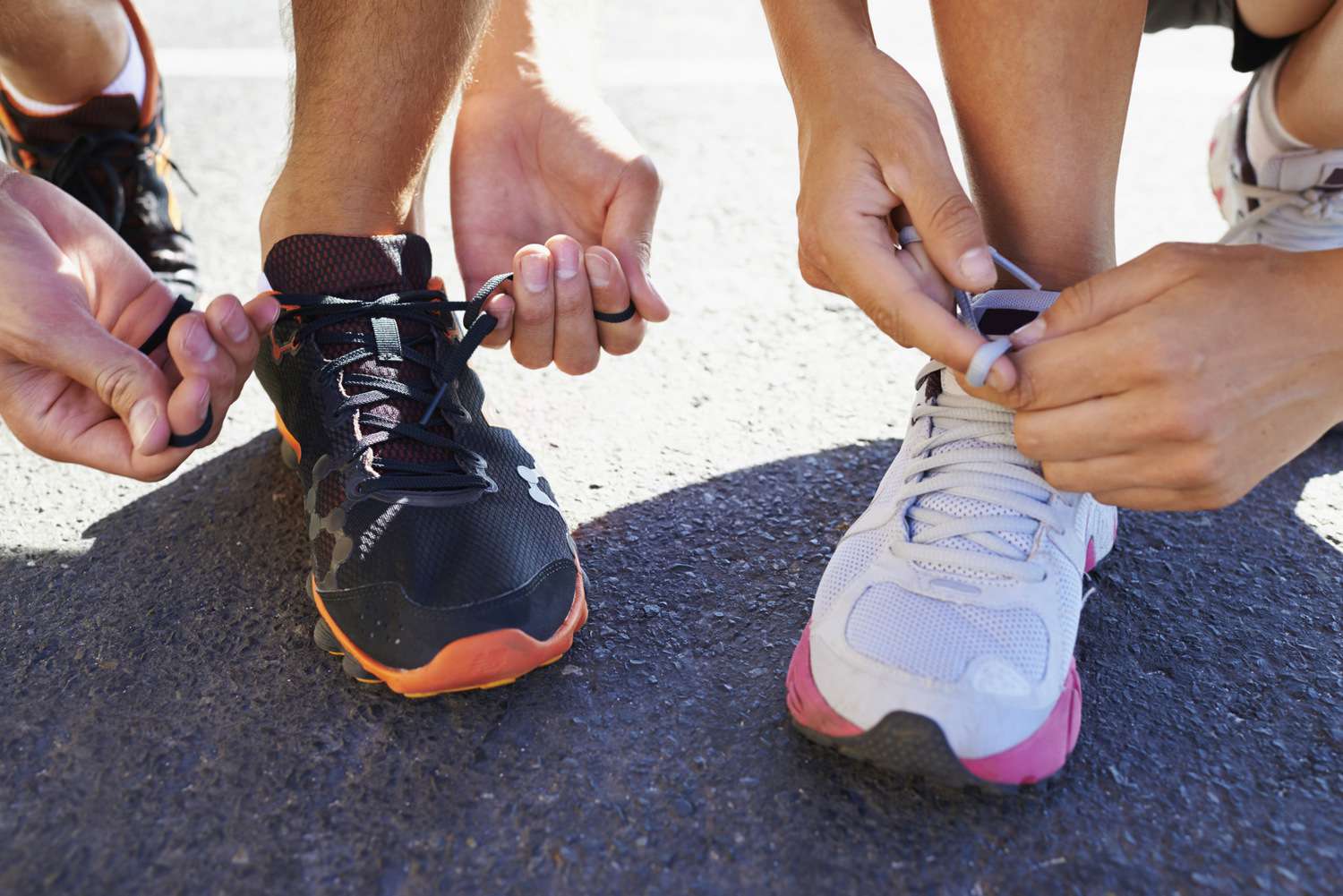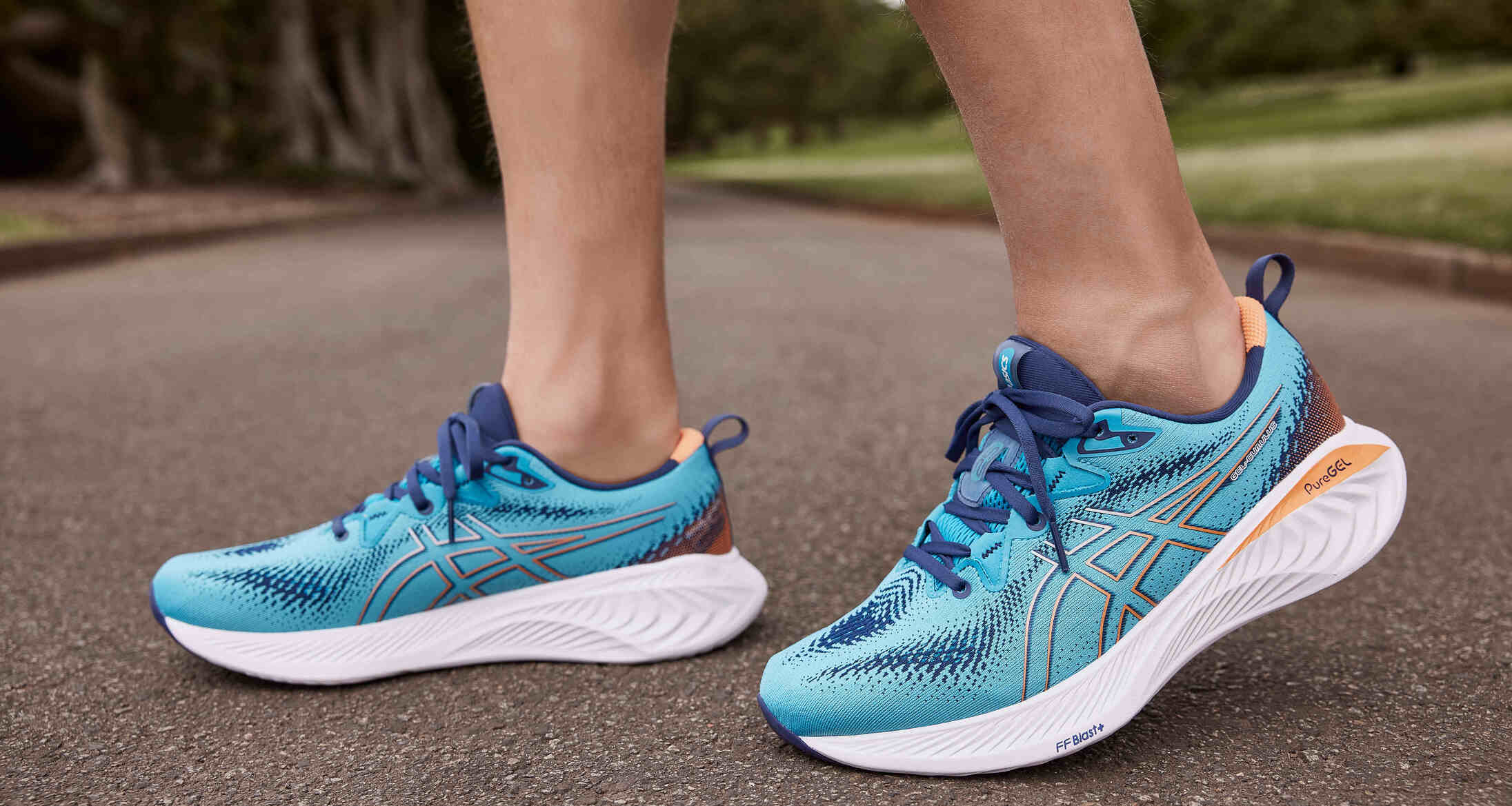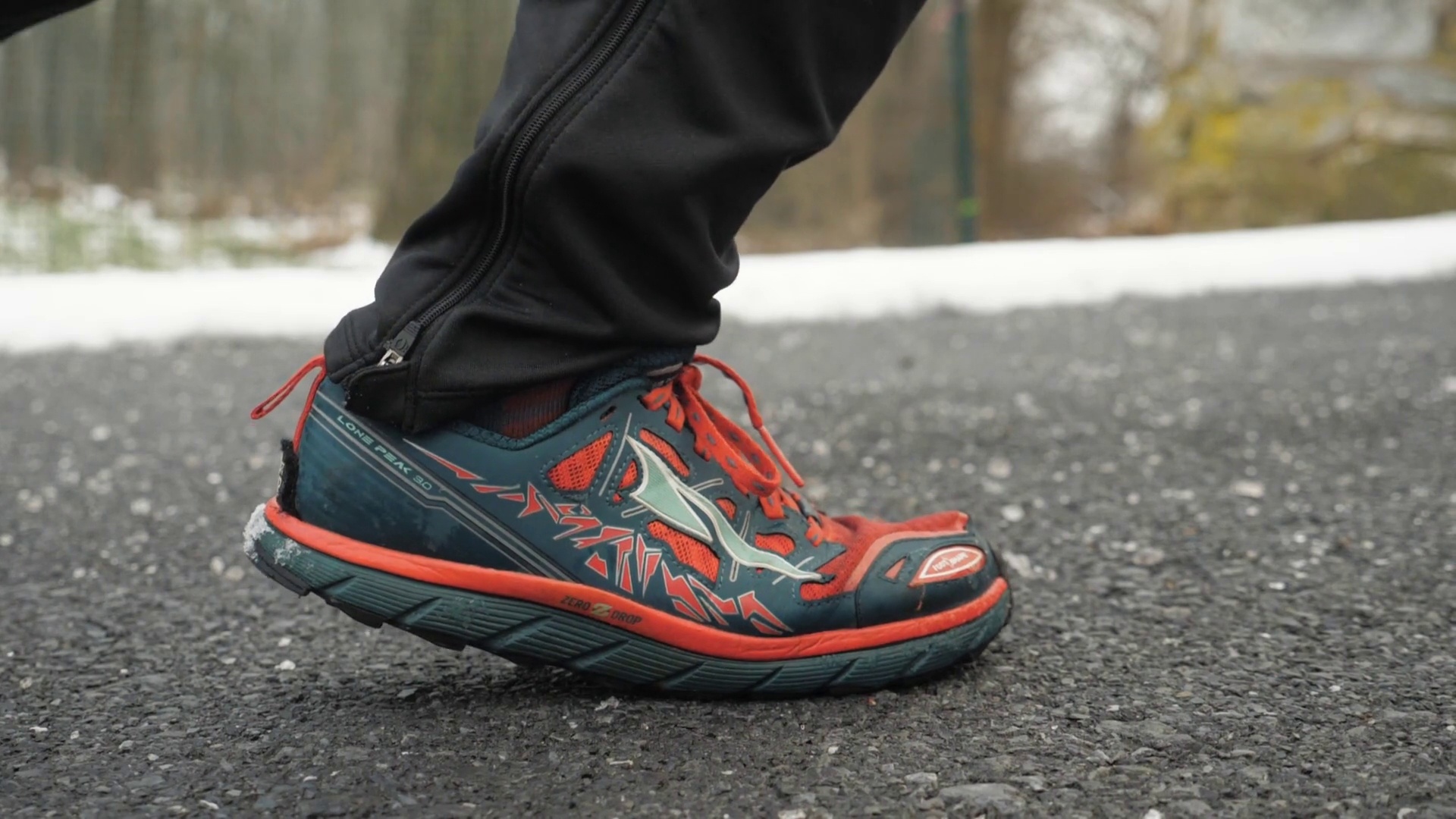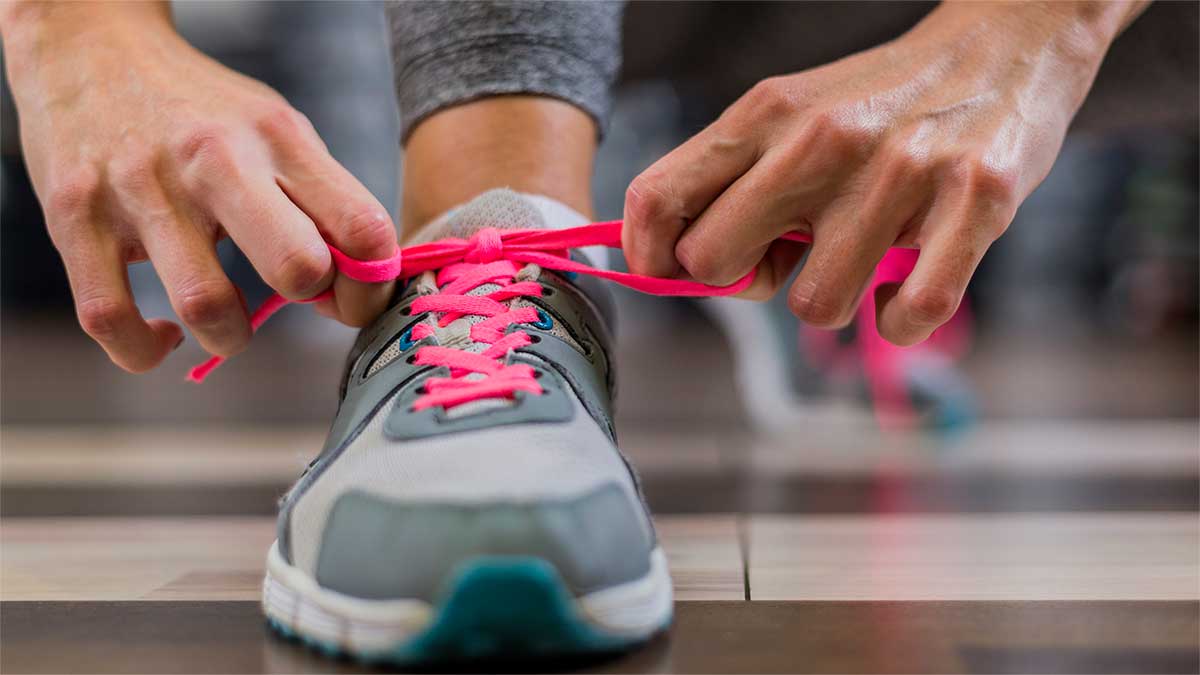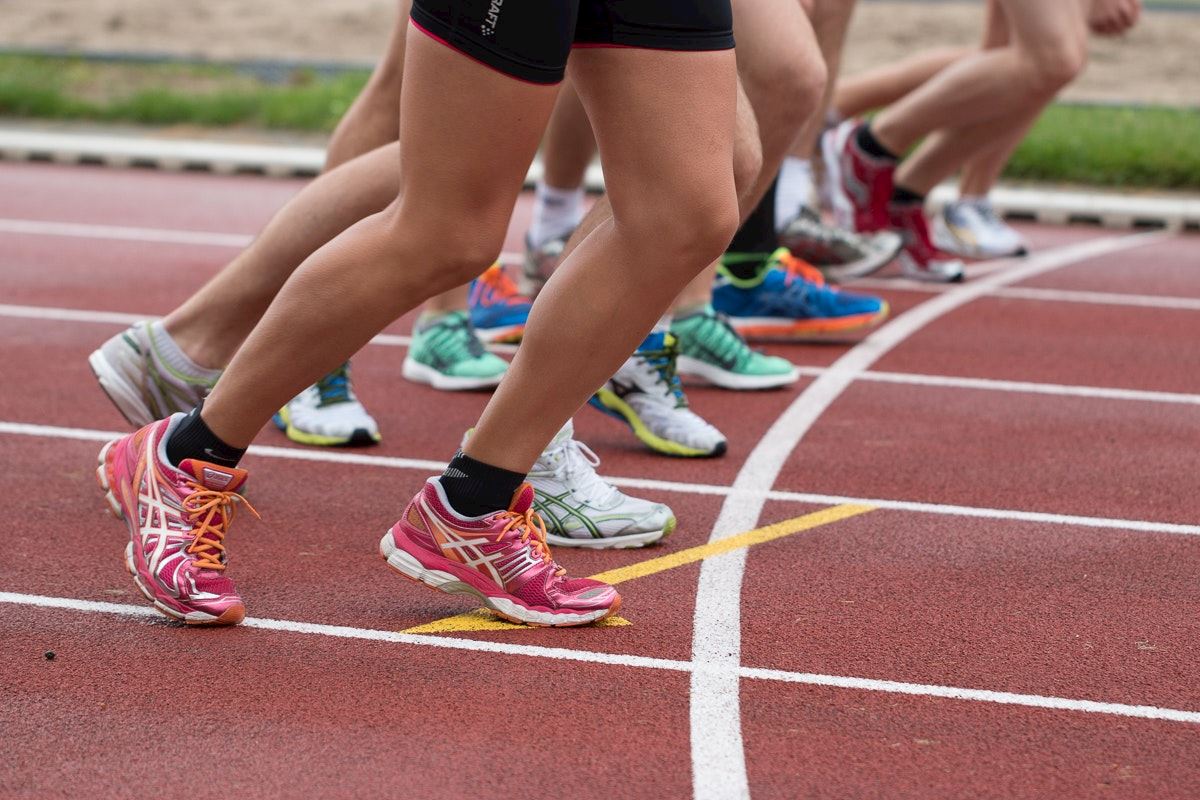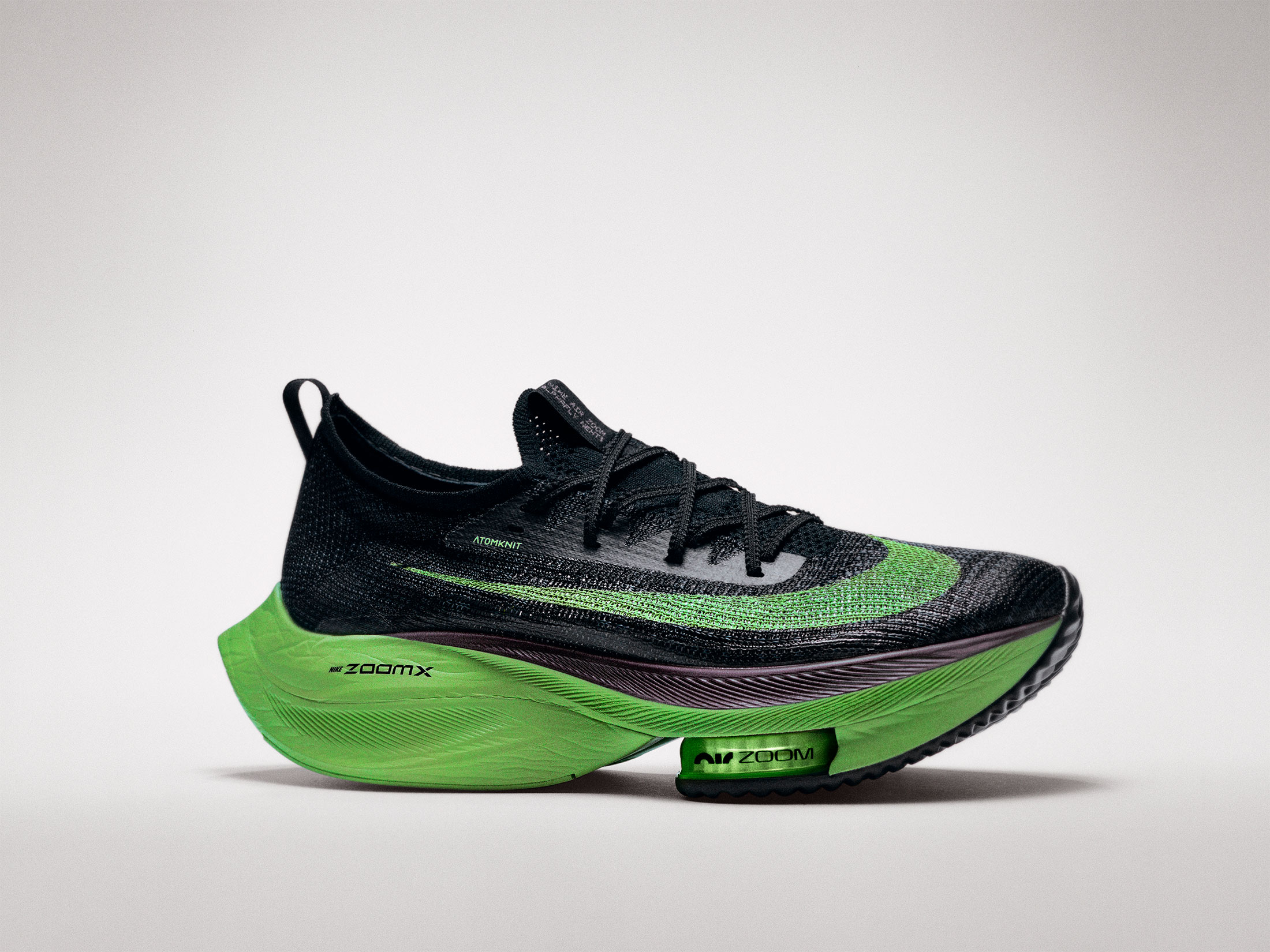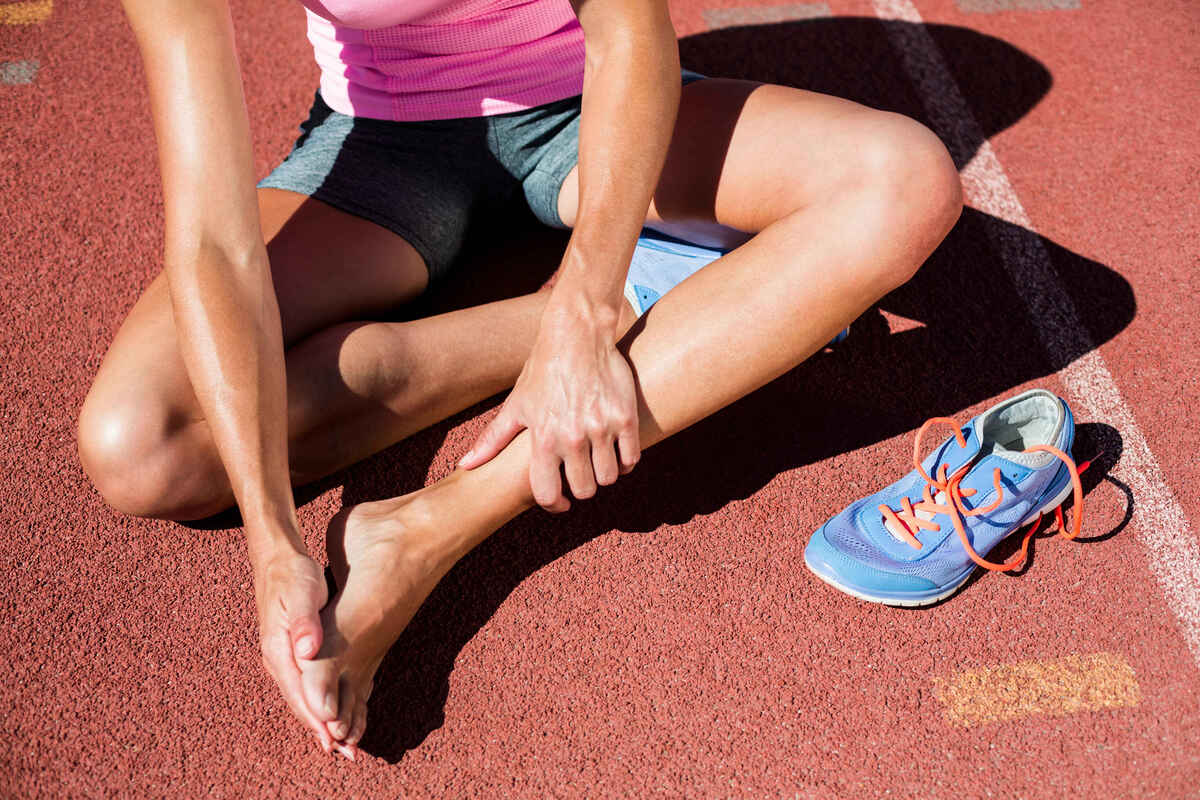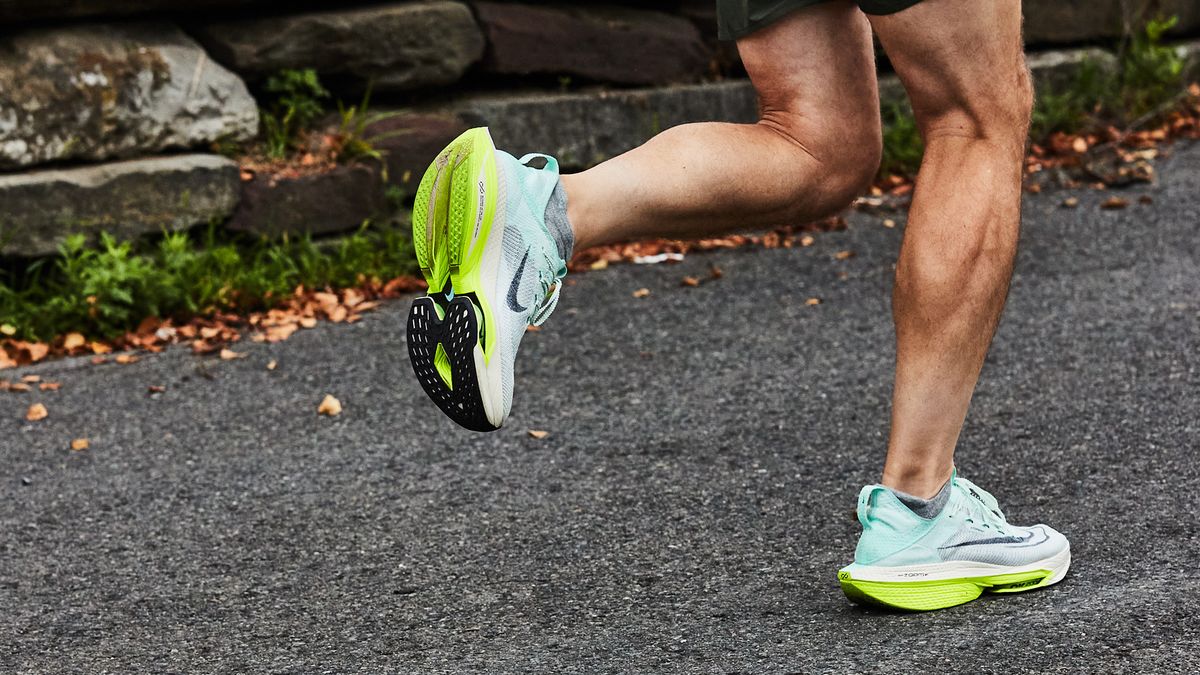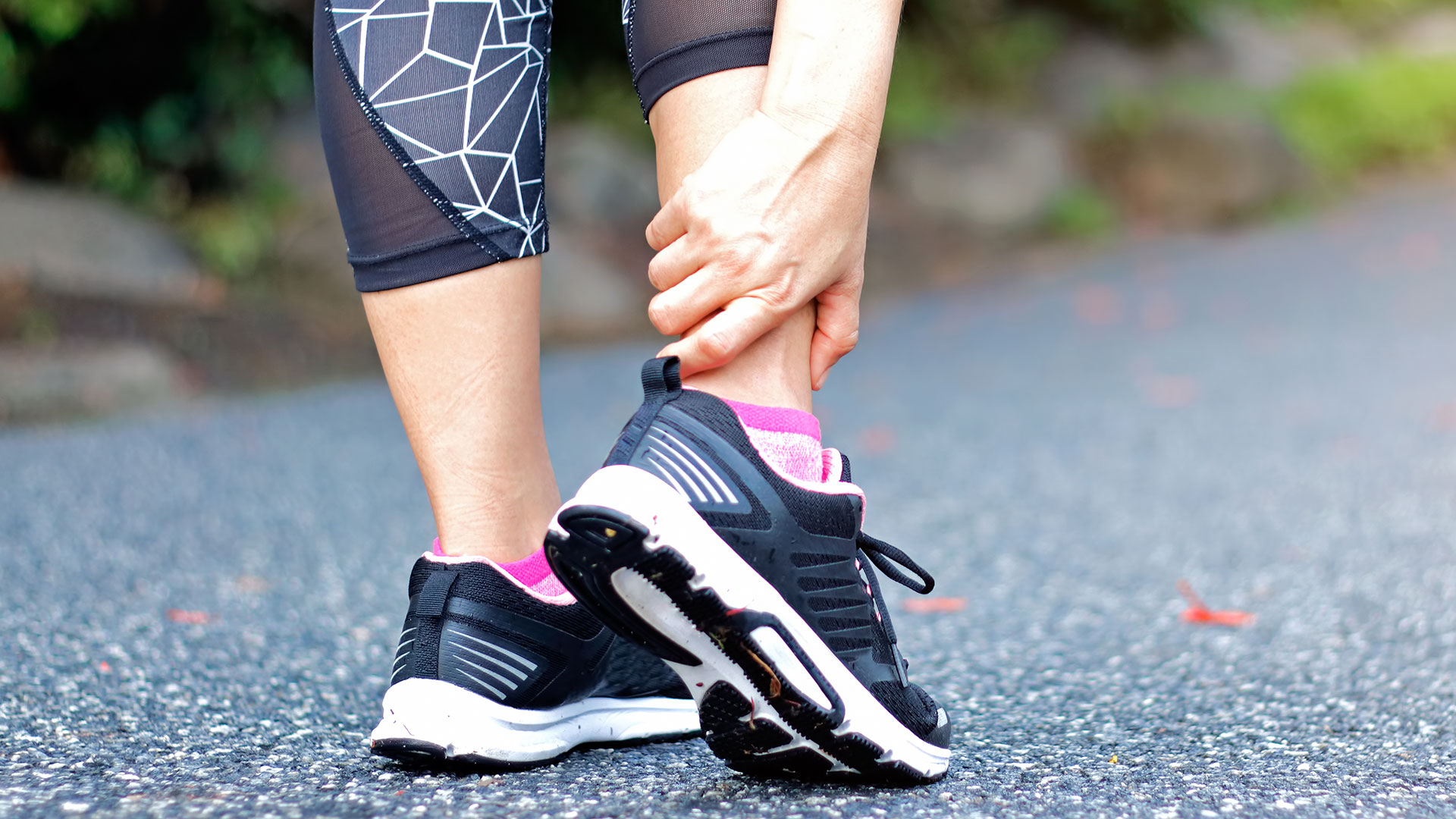Home>Misc>Featured>What Is The Difference Between Running Shoes And Basketball Shoes
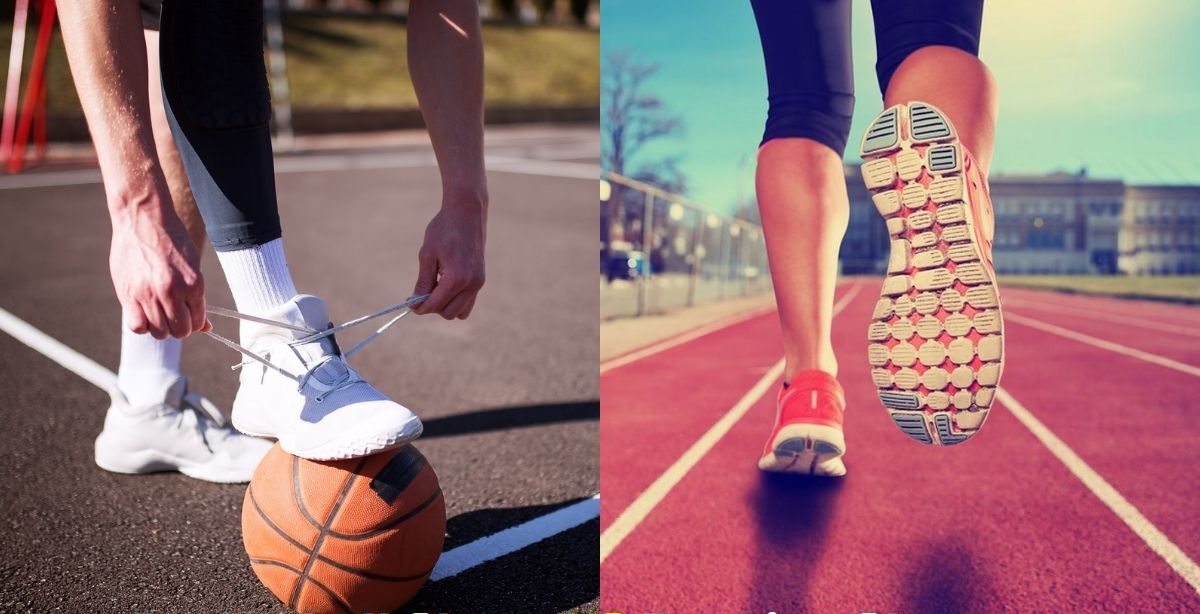

Featured
What Is The Difference Between Running Shoes And Basketball Shoes
Modified: August 19, 2023
Discover the key differences between running shoes and basketball shoes. Find out which shoe is best for your featured activities.
Introduction
Welcome to the world of athletic footwear! When it comes to sports, having the right pair of shoes is crucial for optimal performance and injury prevention. Whether you are a runner or a basketball player, selecting the appropriate footwear can make all the difference in your game. But what sets running shoes and basketball shoes apart? In this article, we will delve into the distinct characteristics of these two types of shoes and explore why they are designed differently to cater to the specific needs of each sport.
Running shoes and basketball shoes are specially engineered to provide the necessary support, cushioning, and traction required for their respective activities. The design and construction of these shoes are tailored to ensure that athletes can perform with confidence and comfort on different types of surfaces. Understanding the unique features of running shoes and basketball shoes will help you make an informed decision when choosing the right pair for your chosen sport.
So, whether you’re a seasoned athlete or someone looking to start a new fitness journey, this article will serve as your guide to understanding the differences between running shoes and basketball shoes. So, let’s lace up and get started!
Purpose of the Article
The purpose of this article is to provide a comprehensive understanding of the differences between running shoes and basketball shoes. By exploring their unique features, we aim to help athletes and fitness enthusiasts make informed decisions when selecting the appropriate footwear for their specific sport.
For those who are new to running or basketball, choosing the right pair of shoes can be a daunting task. With an overwhelming number of options available in the market, it’s important to know what sets these two types of shoes apart. The goal of this article is to break down the key characteristics of running shoes and basketball shoes, allowing readers to identify which features are essential for their individual needs and preferences.
Additionally, understanding the importance of proper footwear for running and basketball is crucial to prevent injuries and optimize performance. Through this article, we aim to highlight the significance of investing in the right shoes for each sport, emphasizing the impact that these shoes can have on an athlete’s comfort, support, and overall experience.
By the end of this article, readers will have a comprehensive understanding of the anatomy, key features, and types of running shoes and basketball shoes. This knowledge will empower them to make informed decisions when purchasing athletic footwear, ensuring that they are equipped with the right pair of shoes to perform at their best and pursue their sports ambitions.
Anatomy of Running Shoes
Running shoes are designed to provide comfort, support, and stability during running activities. Understanding the anatomy of these shoes can help athletes select the right pair for their specific needs. Here are the key components of running shoes:
- Upper: The upper part of the shoe is responsible for securing the foot in place and protecting it from external elements. It is typically made of breathable materials such as mesh or synthetic fabrics to enhance airflow and reduce moisture build-up.
- Midsole: The midsole acts as the primary cushioning layer, absorbing impact forces and providing comfort. It is usually made of foam or gel materials that offer excellent energy return and shock absorption. Different brands use various technologies to enhance cushioning and responsiveness.
- Outsole: The outsole is the bottom part of the shoe that comes into direct contact with the ground. It is designed to provide traction and grip on various surfaces. Running shoe outsoles commonly feature rubber compounds with tread patterns optimized for road or trail running.
- Heel counter: The heel counter is a firm structure located in the rear of the shoe. It provides stability and support to the heel, preventing excessive movement and reducing the risk of injuries such as sprains and strains.
- Toe box: The toe box is the forward area of the shoe that accommodates the toes. It should provide enough room for natural toe splay while allowing for a secure fit. A wide and spacious toe box is often preferred to prevent issues like bunions or discomfort during longer runs.
- Lacing system: The lacing system allows for customized fit and support. Different lacing techniques can be used to adjust the tightness and pressure distribution across the foot.
- Collar and tongue: The collar and tongue of running shoes provide cushioning and support around the ankle area. A padded collar helps to prevent friction and discomfort during longer runs.
By understanding the various components of running shoes, athletes can evaluate their specific needs in terms of cushioning, stability, and fit. This knowledge helps in selecting the right running shoe model and brand that aligns with their running style and goals.
Key Features of Running Shoes
Running shoes come with a range of features that are essential for providing optimal performance and support during running activities. These features vary among different shoe models and brands, but here are some key aspects to consider:
- Cushioning: One of the most important features of running shoes is cushioning. The midsole of running shoes is designed to provide shock absorption and protection against impact forces. The level of cushioning varies, from minimal or low-profile cushioning for a more barefoot-like feel, to maximum cushioning for enhanced comfort and support.
- Stability: Stability is crucial for runners, especially those who overpronate or supinate. Running shoes offer various stability features, such as medial posts or technology that help guide the foot into a neutral position and prevent excessive inward or outward rolling.
- Arch Support: Different individuals have different arch types (high, medium, or low). Running shoes come with different types of arch support to cater to these variations. It’s important to choose a shoe that provides the appropriate level of arch support for your foot type to prevent discomfort and potential injuries.
- Flexibility: The flexibility of a running shoe affects how natural and unrestricted your foot movement is while running. Flex grooves in the outsole or a more flexible midsole allow for a more efficient toe-off and a smoother transition through the running gait cycle.
- Breathability: Running shoes often feature breathable materials in the upper to enhance airflow and prevent excess heat and moisture build-up. This helps keep your feet cool and dry, reducing the risk of blisters and discomfort caused by sweat.
- Weight: The weight of the running shoe can impact your running performance. Lighter shoes are often preferred for faster runs or races, as they reduce the energy expenditure required to lift your feet off the ground. However, some runners may prefer slightly heavier shoes for added stability and cushioning.
- Durability: Running shoes should be built to withstand the repetitive impact and abrasion associated with running. High-quality materials and reinforced areas such as the outsole and toe box can enhance the durability of the shoe, ensuring it lasts for a reasonable period of time.
When choosing a pair of running shoes, it’s essential to consider your specific needs and running style. Testing different models and seeking advice from knowledgeable running shoe specialists can help you find the perfect shoe that suits your foot shape, biomechanics, and preferences.
Common Types of Running Shoes
Running shoes are designed with different characteristics and features to meet the specific needs of various running activities and terrain types. Here are some common types of running shoes:
- Neutral Cushioned Shoes: These shoes are designed for runners with a neutral foot strike and don’t require additional stability or motion control features. They typically offer a good amount of cushioning and are suitable for long-distance running.
- Stability Shoes: Stability shoes are tailored for runners who slightly overpronate, meaning their feet roll inward excessively during the foot strike. These shoes provide additional support and often feature features like medial posts or wedges to help stabilize the foot.
- Minimalist Shoes: Minimalist or barefoot-style shoes offer a minimal level of cushioning and support. They focus on promoting a more natural running gait and foot strength, allowing for a closer connection with the ground. These shoes are suitable for experienced runners who have developed strong foot and calf muscles.
- Trail Running Shoes: Trail running shoes are specifically designed for off-road running on uneven terrain. They have an aggressive outsole with deep lugs for increased traction and stability. These shoes also often feature protective elements like a reinforced toe cap and a durable upper to shield the foot from rocks, roots, and other trail hazards.
- Racing Shoes: Racing shoes are lightweight and designed for speed. They typically have minimal cushioning to reduce weight and allow for a more responsive toe-off. These shoes are commonly used for shorter distance races or for runners aiming to improve their race times.
- Long-Distance Shoes: These shoes are engineered to provide maximum cushioning and support for runners who cover long distances on a regular basis. They prioritize comfort and durability to withstand the repetitive impact of extended runs.
- Training Shoes: Training shoes are versatile all-around shoes designed for everyday running and workouts. They offer a blend of cushioning, support, and durability to accommodate a range of activities and training intensities.
It’s important to understand that while these categories exist, every runner’s needs and preferences may vary. Trying on different types of running shoes and getting a professional gait analysis can help you determine which category suits you best.
Importance of Proper Running Shoes
Choosing the right pair of running shoes is crucial for your overall running experience and performance. Here are the key reasons why proper running shoes are important:
- Injury Prevention: Wearing running shoes that are designed specifically for the needs of your foot and running style can help prevent injuries. The cushioning, support, and stability features of running shoes help absorb impact, reduce stress on joints, and maintain proper alignment, decreasing the risk of common running injuries like shin splints, plantar fasciitis, and knee pain.
- Comfort: Running in comfortable shoes not only enhances your overall experience but also promotes better endurance. Running shoes that fit well, provide adequate cushioning, and support your feet can help prevent discomfort, blisters, and hot spots, allowing you to focus on your run without distraction.
- Performance Enhancement: The right pair of running shoes can contribute to improved running performance. Shoes designed for your specific foot mechanics and running gait can optimize your energy transfer, allowing you to run more efficiently. They can also enhance your stability, traction, and responsiveness, enabling you to maintain a faster pace and better control on various terrains.
- Confidence: Wearing proper running shoes gives you the confidence to push yourself and overcome mental barriers. When you feel supported and comfortable in your shoes, you can focus on your running goals and strive for better results without the fear of discomfort or instability.
- Longevity: Investing in high-quality running shoes can save you money in the long run. These shoes are built with durable materials that can withstand the demands of regular running, ensuring they hold up well over time. Choosing the right pair of shoes initially will save you from spending additional money on replacements sooner than necessary.
It’s essential to remember that running shoes have a lifespan. Over time, the cushioning and support deteriorate, reducing their effectiveness. As a general guideline, it is recommended to replace your running shoes every 300-500 miles or when you begin to experience discomfort or noticeable wear and tear.
Ultimately, investing in proper running shoes that cater to your specific needs and running style will not only enhance your running experience but also contribute to your overall well-being and longevity as a runner.
Anatomy of Basketball Shoes
Basketball shoes are specifically designed to meet the unique demands of the game, providing players with the necessary support, traction, and stability on the court. Understanding the anatomy of basketball shoes can help players choose the right pair for optimal performance. Here are the key components of basketball shoes:
- Upper: The upper of basketball shoes is typically made of synthetic materials or leather to provide durability and support. It is designed to offer stability and secure the foot during quick lateral movements and jumps.
- Midsole: The midsole of basketball shoes is constructed to provide cushioning and shock absorption during high-impact movements. It often contains foam or gel technologies to enhance responsiveness and energy return, allowing players to be more explosive on the court.
- Outsole: The outsole is a critical component of basketball shoes, as it is responsible for traction and grip on the basketball court. The outsole usually features a specialized rubber compound with patterned grooves or multidirectional herringbone patterns to ensure quick stops, starts, and cuts without slippage.
- Collar: The collar of basketball shoes refers to the area around the ankle. It can be low, mid, or high-cut, offering varying degrees of ankle support. The collar may have padding or additional materials to provide stability and protect the ankle from injuries.
- Toe Cap: The toe cap of basketball shoes is reinforced to protect the toes during intense play and potential collisions. It is often made of durable materials to withstand the wear and tear associated with the fast-paced nature of basketball.
- Lacing System: The lacing system in basketball shoes allows players to adjust the fit and support according to their preferences. It ensures a secure and lockdown fit, reducing the risk of foot slippage inside the shoe during quick movements.
- Heel Counter: The heel counter of basketball shoes provides stability and helps prevent excessive movement and slipping of the heel during dynamic actions such as jumps and cuts.
Each component of basketball shoes is meticulously designed to enhance players’ performance and protect them from potential injuries. Understanding the anatomy of these shoes can assist players in selecting the right pair that caters to their specific playing style and positions on the basketball court.
Key Features of Basketball Shoes
Basketball shoes are equipped with specific features to cater to the unique demands of the sport. These features enhance performance, provide support, and protect players on the court. Understanding the key features of basketball shoes will help players make informed decisions when choosing the right pair. Here are some essential features to consider:
- Ankle Support: Basketball shoes offer various levels of ankle support, ranging from low, mid, to high-cut designs. The choice of ankle support depends on individual preference and the need for stability during quick lateral movements and jumps. High-cut designs provide maximum ankle support, while low-cut designs allow for greater flexibility and agility.
- Cushioning: Basketball involves high-impact movements, such as jumping and landing. Good cushioning in basketball shoes helps absorb shock and minimize the strain on joints and muscles. Different cushioning technologies are used by brands to provide responsiveness, energy return, and overall comfort.
- Traction: The ability to quickly change direction and stop without sliding is crucial in basketball. The outsole of basketball shoes has patterned grooves or herringbone patterns for maximum traction on the court. This ensures players can make sharp cuts, start and stop rapidly, and maintain stability during play.
- Durability: Basketball shoes are subjected to intense wear and tear due to the physical nature of the game. Durability is an important factor to consider, as shoes need to withstand the rigors of constant running, jumping, and quick movements. The materials used in the upper, toe cap, and outsole contribute to the overall durability of basketball shoes.
- Fit and Lockdown: A secure fit is crucial to prevent foot slippage inside the shoes and maintain stability during play. Basketball shoes often have a combination of lacing systems, straps, or lockdown mechanisms to provide a customizable and snug fit. This ensures optimal support and minimizes the risk of injuries.
- Breathability: Basketball is a physically demanding sport that often leads to sweat accumulation. Breathable materials in the upper of basketball shoes allow air circulation, keeping the feet cool and reducing the likelihood of discomfort, blisters, and odor.
- Weight: Lightweight basketball shoes can offer increased agility and flexibility on the court. However, some players may prefer slightly heavier shoes for added stability and support. Finding the right balance between weight, support, and performance is important when choosing basketball shoes.
By understanding these key features, basketball players can make informed decisions when selecting basketball shoes that best align with their playing style, position, and personal preferences. It is important to try on different models, consider individual needs, and seek advice from basketball shoe specialists to find the perfect pair for optimal performance and court safety.
Common Types of Basketball Shoes
Basketball shoes come in various types, each designed to cater to the specific needs and playing styles of basketball players. Understanding these different types can help players choose the right pair that suits their preferences and enhances their performance on the court. Here are some common types of basketball shoes:
- All-Around Shoes: These basketball shoes are versatile and suitable for players of all positions. They offer a balanced combination of cushioning, support, and responsiveness to meet the demands of different playing styles and movements.
- High-Top Shoes: High-top basketball shoes have a higher cut that provides maximum ankle support and stability. These shoes are often preferred by players who prioritize ankle protection during aggressive movements, such as jumping and landing.
- Mid-Top Shoes: Mid-top basketball shoes offer a moderate level of ankle support while allowing for more flexibility and freedom of movement. They strike a balance between ankle support and agility, making them suitable for players who value both stability and mobility.
- Low-Top Shoes: Low-top basketball shoes have the lowest cut among the different types, providing the least amount of ankle support. However, they offer the highest level of mobility and flexibility, making them ideal for players who prioritize speed, agility, and quick directional changes.
- Lightweight Shoes: These basketball shoes are designed with lightweight materials and construction to enhance speed and agility. They prioritize responsiveness and quickness, making them suitable for players who rely on their speed and quickness to outmaneuver opponents.
- Cushioned Shoes: Cushioned basketball shoes provide extra padding and support in the midsole for enhanced shock absorption and comfort. They are ideal for players who prioritize impact protection and seek a smooth and comfortable ride on the court.
- Outdoor Shoes: Outdoor basketball shoes are specifically designed to withstand the harsh conditions of outdoor courts. They feature a more durable outsole and materials to provide better traction and longevity on rough surfaces.
Choosing the right type of basketball shoes depends on individual preferences, playing style, and the specific needs of players. It’s important to try on different types, consider the level of ankle support, cushioning, and other features, and seek advice from knowledgeable professionals to find the perfect pair that enhances performance and minimizes the risk of injuries on the basketball court.
Importance of Proper Basketball Shoes
Wearing the right pair of basketball shoes is essential for basketball players to perform at their best and stay safe on the court. Here are the key reasons why proper basketball shoes are important:
- Ankle Support: Basketball involves quick lateral movements, jumps, and sudden changes in direction, putting immense strain on the ankles. Proper basketball shoes with adequate ankle support, such as high-top or mid-top designs, help prevent ankle sprains and provide stability during these dynamic movements.
- Impact Protection: The constant running, jumping, and landing in basketball can put significant stress on joints and muscles. Proper basketball shoes with cushioning in the midsole absorb shock and reduce the impact on the feet, knees, and lower body, minimizing the risk of injuries like stress fractures and knee discomfort.
- Traction and Grip: The unique outsole pattern of basketball shoes provides optimal traction on the court’s surface, allowing players to make quick cuts, start and stop suddenly, and maintain balance. Good traction and grip help prevent slipping and sliding, giving players more control and confidence in their movements.
- Comfort and Fit: Basketball games and practices can be physically demanding and involve extended periods of time on the court. Proper basketball shoes that fit well and offer cushioning, breathability, and support ensure players’ comfort throughout the game, reducing the likelihood of discomfort, blisters, and distractions.
- Performance Enhancement: When players wear basketball shoes specifically designed for the sport, they can experience enhanced performance. Shoes with responsive cushioning and proper fit allow players to move more efficiently, be more agile, and generate more power in their jumps and movements, leading to improved performance on the court.
- Injury Prevention: Wearing proper basketball shoes significantly reduces the risk of common basketball-related injuries. The combination of ankle support, impact protection, traction, and fit helps minimize the chances of ankle sprains, knee injuries, foot problems, and other injuries associated with the sport.
- Durability: Basketball shoes undergo rigorous activity and endure constant wear and tear. Proper basketball shoes are built with durable materials that can withstand the demands of the game and maintain their performance over time. Investing in durable shoes saves players from frequent replacements and ensures long-lasting performance.
It is crucial for basketball players to invest in high-quality basketball shoes designed with their specific needs in mind. Analyzing factors like ankle support, cushioning, traction, fit, and durability helps players find the right pair of basketball shoes that will support their performance, provide protection, and enhance their overall basketball experience.
The Differences between Running Shoes and Basketball Shoes
While both running shoes and basketball shoes fall under the category of athletic footwear, they are designed with distinct features to cater to the unique requirements of each sport. Here are the key differences between running shoes and basketball shoes:
- Usage and Motion: Running shoes are primarily designed for forward motion and repetitive movements. They prioritize cushioning and shock absorption to reduce the impact on joints during activities like jogging or long-distance running. On the other hand, basketball shoes are engineered for multidirectional movements, abrupt stops and starts, and lateral shuffling. They focus on providing ankle support, stability, and traction to facilitate quick changes in direction.
- Ankle Support: Running shoes typically have a low-cut or mid-cut design that allows for freedom of ankle movement. They prioritize flexibility and lightweight construction to promote natural foot motion. In contrast, basketball shoes often feature a high-top or mid-top design to provide substantial ankle support and protection during frequent jumping, landing, and lateral movements.
- Cushioning: Running shoes emphasize cushioning and shock absorption to minimize the impact on the feet and lower body during repetitive motions. The midsole of running shoes is typically thicker and more responsive to provide a comfortable and smooth ride. In contrast, basketball shoes place greater importance on responsiveness, as players require quick movements and explosive jumps. The cushioning in basketball shoes is often more focused on providing impact protection and energy return.
- Traction: Running shoes usually have a less aggressive outsole pattern to enhance flexibility and promote faster movement on even surfaces like roads or treadmills. The focus is on providing reliable grip and durability for extended periods of running. On the other hand, basketball shoes have a more pronounced outsole pattern, often featuring herringbone or multidirectional traction patterns. This design allows for better grip and stability on the hardwood court, enabling players to make sharp cuts, quick pivots, and sudden stops.
- Weight: Running shoes tend to be lighter in weight to enhance efficiency and performance during long-distance runs. The lighter construction helps reduce fatigue and allows for a more natural running stride. In contrast, basketball shoes are slightly heavier to provide additional support and stability required for quick movements, jumps, and abrupt changes in direction.
- Aesthetics: Basketball shoes often prioritize visual appeal, with bold and vibrant designs that reflect the style and personality of players. They are regarded as fashion statements both on and off the court. Running shoes, while available in various styles and colors, tend to have a more subdued and functional design that focuses on performance rather than style.
Understanding the differences between running shoes and basketball shoes is crucial for athletes to choose the appropriate footwear for their specific sport and activity. Selecting the right shoes ensures enhanced performance, comfort, and safety, allowing athletes to excel in their respective disciplines.
Cushioning and Support
Cushioning and support are essential factors to consider when comparing running shoes and basketball shoes. While both types prioritize these features, they are tailored differently to meet the distinct needs of each sport.
Running Shoes: Running shoes prioritize cushioning due to the repetitive impact that occurs during running. They provide ample cushioning in the midsole to absorb shock and reduce stress on joints. The cushioning in running shoes aims to provide a comfortable and cushioned ride, minimizing the risk of injuries. Different levels of cushioning are available, ranging from minimalist or low-profile cushioning for a more barefoot-like feel, to maximum cushioning for enhanced comfort and support. Additionally, running shoes focus on providing a neutral platform to accommodate different foot types and allow for a natural gait cycle.
Basketball Shoes: Basketball shoes also prioritize cushioning, but with a focus on responsiveness and impact protection. The cushioning in basketball shoes is designed to provide a balance between comfort and energy return. It aims to enhance players’ explosiveness during jumps and provide a quick response for rapid movements on the court. Basketball shoes often incorporate technologies like foam, gel, or air units in the midsole to offer optimal cushioning and shock absorption. Additionally, basketball shoes place a significant emphasis on support, particularly in the ankle area. The high-top or mid-top design provides stability and helps prevent ankle injuries during dynamic movements and landings.
In summary, running shoes emphasize cushioning for comfort and shock absorption during repetitive forward motion, while basketball shoes focus on cushioning that enhances responsiveness and protects against the impact of jumps and quick lateral movements. Additionally, basketball shoes prioritize ankle support to prevent injuries, whereas running shoes prioritize a neutral platform to accommodate varying foot strikes and gait patterns.
When selecting between running shoes and basketball shoes, it is crucial to consider your specific needs and the demands of your sport. Assessing the level of cushioning and support required for your activities helps ensure you choose the appropriate footwear that enhances your performance and minimizes the risk of injuries.
Traction and Grip
Traction and grip are vital considerations when comparing running shoes and basketball shoes. Both types of footwear prioritize providing traction on different surfaces, but they are designed with distinct features to cater to the specific movements and demands of each sport.
Running Shoes: Running shoes are designed to provide reliable traction on various surfaces, including roads, trails, and tracks. The outsole of running shoes typically features a more uniform pattern that focuses on grip and durability. The tread patterns are designed to offer sufficient traction on even surfaces to prevent slippage during running activities. Running shoes aim to strike a balance between grip and flexibility to allow for a smooth and efficient stride. The outsole materials used are often durable and resistant to abrasion to withstand the repetitive pounding of running on different terrains.
Basketball Shoes: Basketball shoes place a significant emphasis on traction and grip, as the sport involves quick changes in direction, abrupt stops, and lateral movements. The outsole of basketball shoes features a more pronounced and specific pattern, often using herringbone or multidirectional traction patterns. These patterns help maximize traction on the hardwood court and provide grip for the quick lateral movements, cuts, and pivots that basketball players regularly perform. The materials used in the outsole are typically softer and stickier to enhance grip without compromising stability.
In summary, running shoes prioritize providing reliable traction on various surfaces, while basketball shoes focus on maximum grip and traction on the basketball court. Running shoes come with a more uniform outsole pattern for grip and durability, while basketball shoes employ a more specific and pronounced pattern to facilitate traction during fast-paced lateral movements and sudden stops.
When selecting between running shoes and basketball shoes, it is essential to consider the type of activities and surfaces you will be engaging with. Proper footwear with appropriate traction and grip ensures stability, reduces the risk of slips and falls, and enhances your performance while participating in your chosen sport.
Design and Aesthetics
The design and aesthetics of running shoes and basketball shoes differ to reflect the unique characteristics and preferences of each sport. While both types of footwear prioritize functionality and performance, their design elements have distinct considerations.
Running Shoes: The design of running shoes often focuses on functionality, durability, and lightweight construction. The aesthetics of running shoes strive for a sleek and streamlined appearance, minimizing unnecessary bulkiness to enhance speed and efficiency. The emphasis is on optimizing performance rather than flashy or elaborate design elements. However, running shoe manufacturers offer a variety of color options and styles to cater to personal preferences and fashion trends. The primary goal is to ensure a comfortable fit and visually appealing appearance for runners.
Basketball Shoes: Basketball shoes, on the other hand, place a strong emphasis on aesthetics and design. They are not only considered as performance equipment but also as a fashion statement both on and off the court. Basketball shoe designs often feature bold color combinations, patterns, and unique detailing to catch the eye and reflect the personality and individual style of players. The visual appeal of basketball shoes is an important aspect for many players, as they want their footwear to represent their identity and create an impact. Shoe brands often collaborate with athletes, celebrities, and designers to create limited editions or signature models with unique design elements.
While design and aesthetics play a role in both types of shoes, the focus in running shoes is primarily on functionality and performance, whereas in basketball shoes, it extends to creating a visually striking and unique style. Ultimately, the design and aesthetics of both types of shoes contribute to the overall appeal and satisfaction of the wearer, complementing the specific needs and preferences of the sport.
When choosing between running shoes and basketball shoes, it’s important to strike a balance between functionality and personal style. By finding a pair that meets your performance requirements while also resonating with your aesthetic preferences, you can enjoy both the functionality and visual appeal of athletic footwear that suits your individual taste.
Conclusion
Both running shoes and basketball shoes serve distinct purposes in the world of athletic footwear. Understanding the differences between these types of shoes ensures that athletes and fitness enthusiasts can make informed decisions when selecting the appropriate footwear for their specific sport and needs.
Running shoes prioritize cushioning, stability, and support to provide a comfortable and efficient running experience. They are designed to minimize impact on joints and muscles, making them suitable for long-distance runs and other forward-motion activities.
On the other hand, basketball shoes focus on ankle support, traction, and grip to facilitate quick lateral movements, explosive jumps, and abrupt stops on the basketball court. They are engineered to provide stability and protection, minimizing the risk of common basketball-related injuries.
The anatomy, key features, and design elements of running shoes and basketball shoes are tailored to optimize performance and enhance the overall experience of athletes. Proper footwear selection ensures improved comfort, reduced risk of injuries, and better support for specific sport-related movements.
When choosing between running shoes and basketball shoes, it’s essential to consider your individual needs, preferences, and the requirements of your chosen sport. Trying on different models, seeking advice from experts, and understanding the unique features and technologies can help you find the perfect pair that suits your foot structure, biomechanics, and playing style.
Remember, both running shoes and basketball shoes play a vital role in your athletic journey, and investing in high-quality, well-fitting footwear is crucial for optimal performance, comfort, and safety. So, lace up, hit the road, or step onto the hardwood court with the confidence that comes from having the right shoes on your feet!

